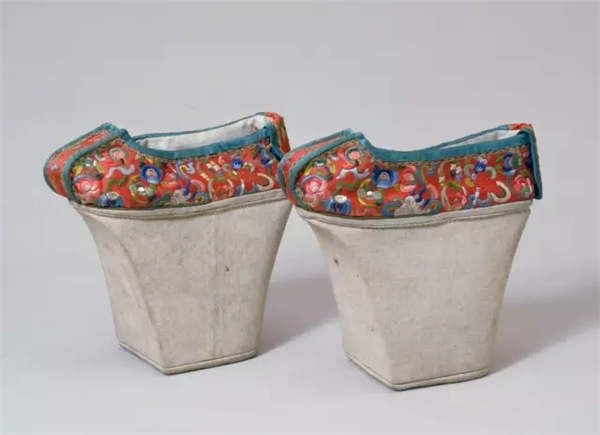RESOURCES
2017-07-05 Source: Chinadaily
Females tend to be loyal followers of fashion, in either ancient times or today. The beauties in the ancient royal court were more of fashion insiders, compared with common people. Let's take a look at fashion items females donned in ancient royal palace.

A gold buyao in the shape of a horse head with deer horns from the Northern Dynasty (386-581), collected by the National Museum of China. [Photo/Official Wechat account of Palace Museum's Taobao]
(Source: Chinadaily)
Buyao hairpin
Buyao, literally translating to "swing by step", was an exquisite hair ornament denoting noble status. The buyao hairpin was generally made of gold in the shape of a dragon or phoenix, and decorated with pearls and jade. The main feature of a buyao was its pendants that swing as the wearer moved, which requires the wearer to walk elegantly. Buyao was popular mainly in Han (206 BC-220) and Tang (618-907) dynasties, and only concubines with high status in the royal court were eligible to wear buyao.

A replica portrays a woman wearing phoenix-shaped buyao with pendants. [Photo/Official Wechat account of Palace Museum's Taobao]
(Source: Chinadaily)

A replicate mural from the Dunhuang Grottoes portrays a woman wearing a unique buyao. [Photo/Official Wechat account of Palace Museum's Taobao]
(Source: Chinadaily)

A pair of red embroidered flower-patterned chopine, 17cm high, from the Palace Museum's collection. [Photo/Official Wechat account of Palace Museum's Taobao]
(Source: Chinadaily)
Chopine
Ancient beauties preferred to wear chopine, just like the modern day enthusiasm for high heels. Chopines were quite popular in the Qing Dynasty (1644-1911), and had different types according to the different shapes of the shoe soles. There were shoes with a common sole, flowerpot-shaped sole or ingot-shaped sole. The popularity of chopines matched the long robes in vogue in the Qing Dynasty.
The Empress Dowager Cixi of the Qing Dynasty was crazy about chopines, and most of her shoes were luxurious, made with elaborate embroidery and valuable jewels.
Though the chopines made females look more graceful, they were not easy to walk in.

A pair of flowerpot-bottomed chopine, 20.5 cm high, from the Palace Museum's collection. [Photo/Official Wechat account of Palace Museum's Taobao]
(Source: Chinadaily)

A pair of flowerpot-bottomed chopine, 18 cm high, from the Palace Museum's collection. [Photo/Official Wechat account of Palace Museum's Taobao]
(Source: Chinadaily)

A pair of lunar-white embroidered chopine with ingot-shaped soles. [Photo/Official Wechat account of Palace Museum's Taobao]
(Source: Chinadaily)

Two screen shots from a Chinese TV drama show the nail sheathes used by ancient women.
(Source: Chinadaily)
Fingernail sheath
Fostering nails had been a fad in ancient times, especially for females of wealthy families. To protect their slender and fragile fingernails, a sheath was designed particularly for nails. The sheath, in the shape of a bow, was always worn on the ring finger and little finger, and at the top part of a finger.
During the Qing Dynasty, the nail sheath was made mostly of gold, silver, jade, hawksbill, pearl and gold-gilded copper, and the craftsmanship was enamel, filigree, carving and diancui (dipping blue).

A painting shows the long fingernails of an ancient woman. [Photo/Official Wechat account of Palace Museum's Taobao]
(Source: Chinadaily)

A gold carved fingernail sheath, 5.2 cm long, from the Palace Museum's collection. [Photo/Official Wechat account of Palace Museum's Taobao]
(Source: Chinadaily)